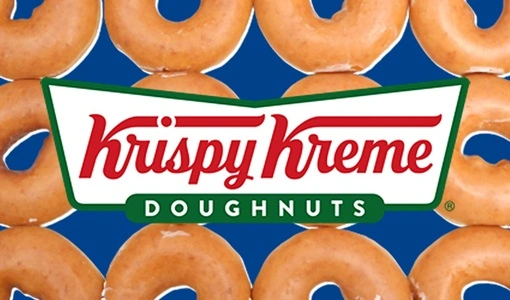Krispy Kreme, the iconic American doughnut brand, entered the Indian market in 2013 via partnerships with Indian firms like Citymax Hotels and Bedrock Food Company . It expanded to multiple cities including Bengaluru, Chennai, Delhi, and others, aiming to build over 100 outlets across regions.

Investment Breakdown: What You’d Typically Expect
Initial Costs
- Franchise Fee: ₹15–30 lakh, depending on format and location.
- Setup & Interiors: ₹20–80 lakh, covering décor, fixtures, branding, and ambiance. Larger stores cost more.
- Equipment & Machinery: ₹10–30 lakh, including donut machines, brewers, display counters, systems.
- Initial Inventory & Stock: ₹5–10 lakh for raw materials and packaging.
- Working Capital: ₹10–20 lakh to cover salaries, utilities, and initial operations.
Royalty & Marketing
- Royalty Fee: 6–8% of gross sales.
- Marketing Fee: Additional ~2–4% of gross sales for brand and local promotions.
Total Estimated Investment & Breakeven
- Overall Investment Range: ₹50 lakh to ₹3 crore, depending on format, size, and location (mall kiosk vs standalone café).
- Estimated ROI Timeline: 12–18 months in high-footfall stores, up to 1.5 years for recovery, with potential for breakeven within the first year.
Eligibility & Key Criteria
Prospective franchisees typically must meet the following:
- Net Worth: Minimum ₹3 crore to ₹16 crore, per varying reports.
- Liquid Capital: ₹2.8–3 crore to ensure liquidity during launch and ramp-up.
- Retail / F&B Experience: Preferred but not mandatory.
- Prime Location Access: Malls, high streets, business districts, or high-traffic leisure zones.
- Full-Time Involvement: Brand expects active onsite management and adherence to quality standards.
Profitability Snapshot
Financial Performance
- Revenue Potential: Annual revenues per unit could be significant; globally Krispy Kreme averages ₹11 crore), with typical breakeven in around 12 months.
- COGS & Operating Expenses: COGS around 25%, operating costs ~45%, supporting net margins of 10–15% depending on local execution.
ROI & Margins
- Net Profit Margin: Estimated at ~15–25% in a well-run location.
- Break-even Period: Realistic recovery within 12–18 months, potentially quicker in urban stores with strong footfall.
Operational & Market Challenges
- Supply Chain Complexity: Perishable inventory demands tight logistics and regional clustering to control quality and costs.
- Consumer Awareness: Donuts remain a niche product—educational marketing is essential to build repeat business.
- Competition & Saturation: Competes with brands like Dunkin’ Donuts, local bakeries, and cafes.
- Franchisee Risk: One Indian franchisee noted many outlets fail to meet rent thresholds due to overhead burdens—highlighting the need for conservative ROI projections.
Final Verdict: Is a Krispy Kreme Franchise in India Worth It?
Yes, but only for well-capitalized and operationally disciplined investors. With total investment ranging ₹50L to ₹3 crore, curated location strategy, and tight cost controls, potential net margins of 15–25% and breakeven in 12–18 months are achievable.
However, success depends heavily on supply chain efficiency, consumer education on donuts, handling perishable inventory, and maintaining premium service. Entrepreneurs should conduct exhaustive due diligence—visit existing outlets, model sales vs costs conservatively, and ensure local demand validity.


